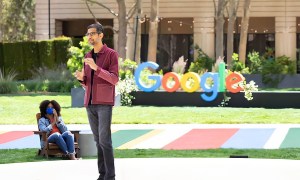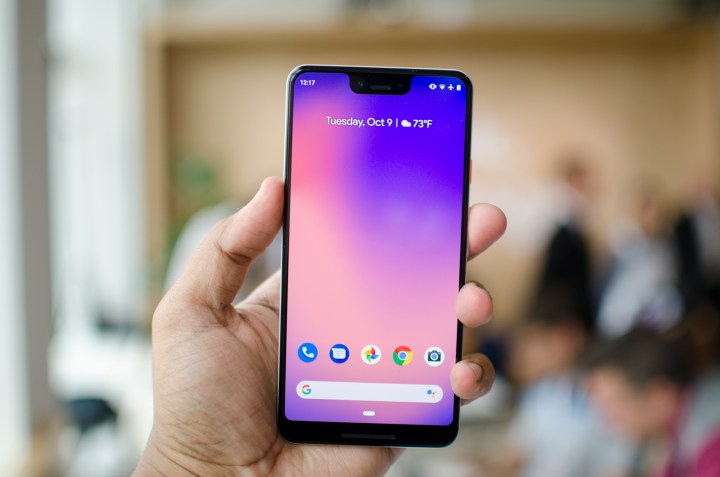

The two best parts of Google’s Pixel phones are the software and the camera. While the Pixel 3’s hardware is satisfactory, it doesn’t quite match the build quality or elegance of phones like the iPhone XS and the Samsung Galaxy S10. The latter phones still feel more substantial, and more hard-wearing. It’s why the $150 price jump from the Pixel 2 to the Pixel 3 doesn’t quite add up. Despite some upgrades, the Pixel 3’s hardware still feels lacking.
The Pixel 3a is Google’s latest entry, and it doesn’t really try to move the needle with hardware because it costs just $399 and $479 for the Pixel 3a XL. But it only makes the Pixel 3’s price tag more perplexing. Here’s a phone that gives you the two best parts of its more expensive brother — for half the price. Why should you spend $800 to $900 for the Pixel 3 and 3 XL again?
You can capture more or less the same photos as an $800 phone with the $400 one.
With the Pixel 3a, you get the same promise of three years of software and security updates. That also means Android updates as soon as Google rolls them out, paired with a clean, uncluttered software experience. There are a ton of smart artificially intelligent (A.I.) features too. For example, Now Playing uses on-device machine learning to recognize songs playing in your surroundings, and show them on the Always-on Display; and Call Screen lets you use Google Assistant to avoid answering annoying robocalls — and those are just two of my favorites.
Many of these software smarts run deep in the camera app too. Top Shot finds the best picture after you’ve taken a photo with the help of A.I., and Night Sight illuminates and colors in ultra dark environments. Google’s fantastic image processing is here without the help of the special Visual Core chip inside the Pixel 3, meaning the engineers spent months reengineering many of the Pixel 3’s key camera capabilities with the Snapdragon 670 processor instead on the Pixel 3a. In layman’s terms, you can capture more or less the same photos as an $800 phone with the $400 one, though with slightly longer processing times.
- 1. Pixel 3a XL
- 2. Google Pixel 3 XL
The main differences are with the processor and build materials. As mentioned in my Pixel 3a review, I didn’t have to worry about performance at all — the 3a an 3a XL operated surprisingly smooth. The build materials do feel a bit cheap though, as the glass on the back of the Pixel 3 has been replaced with polycarbonate on the Pixel 3a. That means no wireless charging as well. The glass on the front is Asahi’s Dragontrail instead of Corning’s Gorilla Glass as on the Pixel 3; and dual stereo speakers are present, but only one is front-facing. The screen is also not of the same quality or resolution, but hey — you get a headphone jack, which can’t be said for the Pixel 3.
The Pixel 3a is a fantastic step in bringing top shelf features to the midrange market.
The front camera is only one lens instead of two, and it has a narrower aperture, so it doesn’t take as good selfies as the Pixel 3 in low light. But the trade offs for the $400 drop in price are more than worth it if it means the same rear camera and software experience.
Crucially, you get bigger batteries that make a huge difference in day-to-day use. Considering I complained about battery life in my Pixel 3 XL review, it’s great to see this resolved with the Pixel 3a and 3a XL; they can last you a full day.
I’m not saying Google Pixel 3 owners should be mad there’s a cheaper version of their phone available with many of the same features (some even better, like battery life). That’s inevitable in tech — just look at how quickly OnePlus launches phones. There’s always something better around the corner.

But how can Google convince fans to drop a lot of money on the upcoming Pixel 4, if there may be a Pixel 4a that offers the best parts of the phone at a drastically lower price? It needs to make sure it offers a premium experience with the next flagship — from build materials to software features — to make the $800 price tag (if it stays the same) agreeable. Google needs to take charge of smartphone trends and stay ahead, instead of lagging behind.
Perhaps there’s a reason Google saw disappointing sales with the Pixel 3. There’s no doubt it’s a great phone, but it needs to stand out more than it currently does for its $800 asking price. Phones are already so expensive, and the Pixel 3a is a fantastic step in bringing top shelf features to the midrange market. But it’s time for Google to take its phone’s hardware more seriously in the flagship category.

